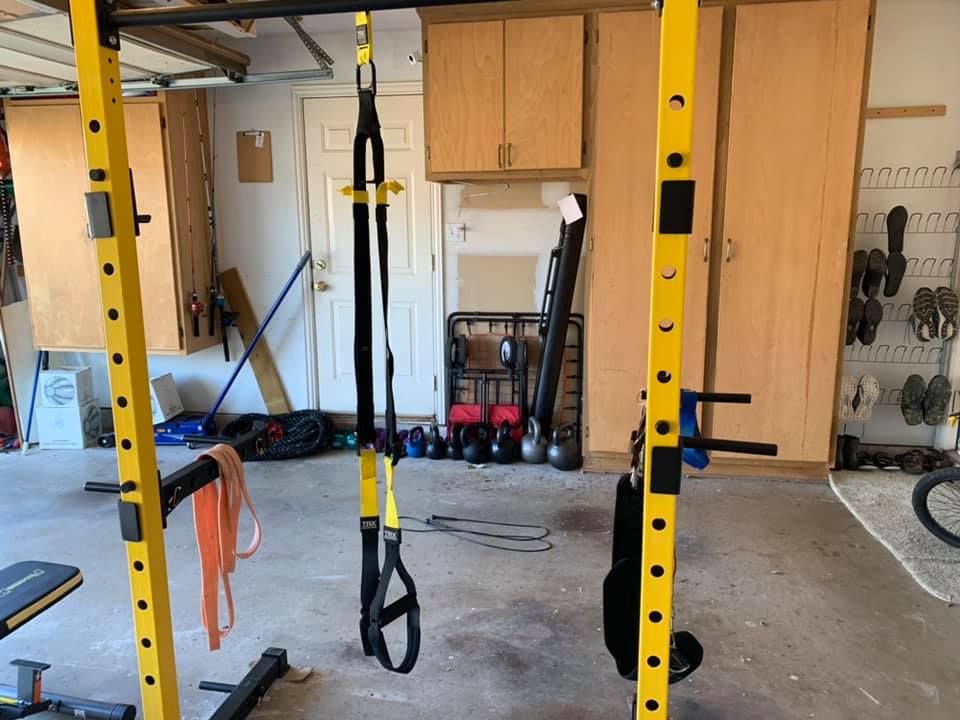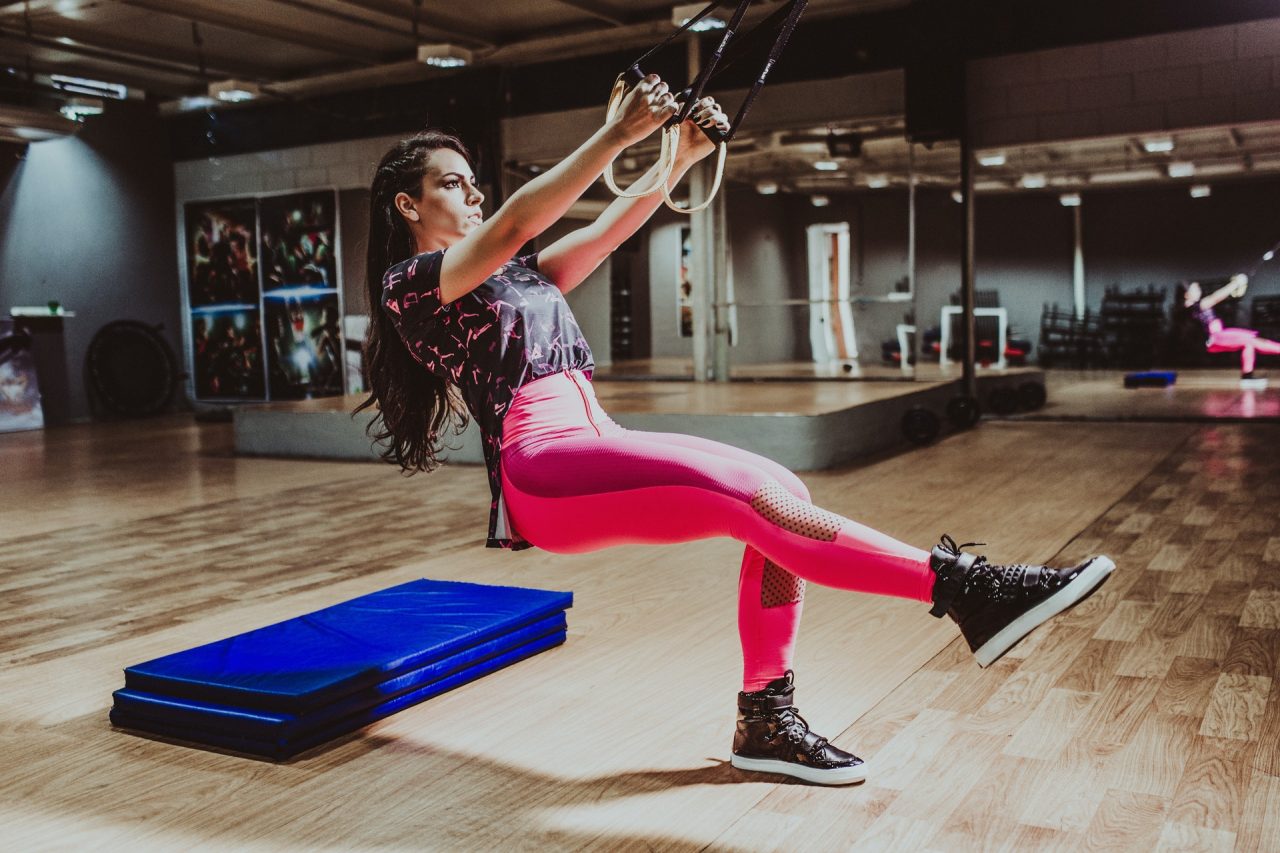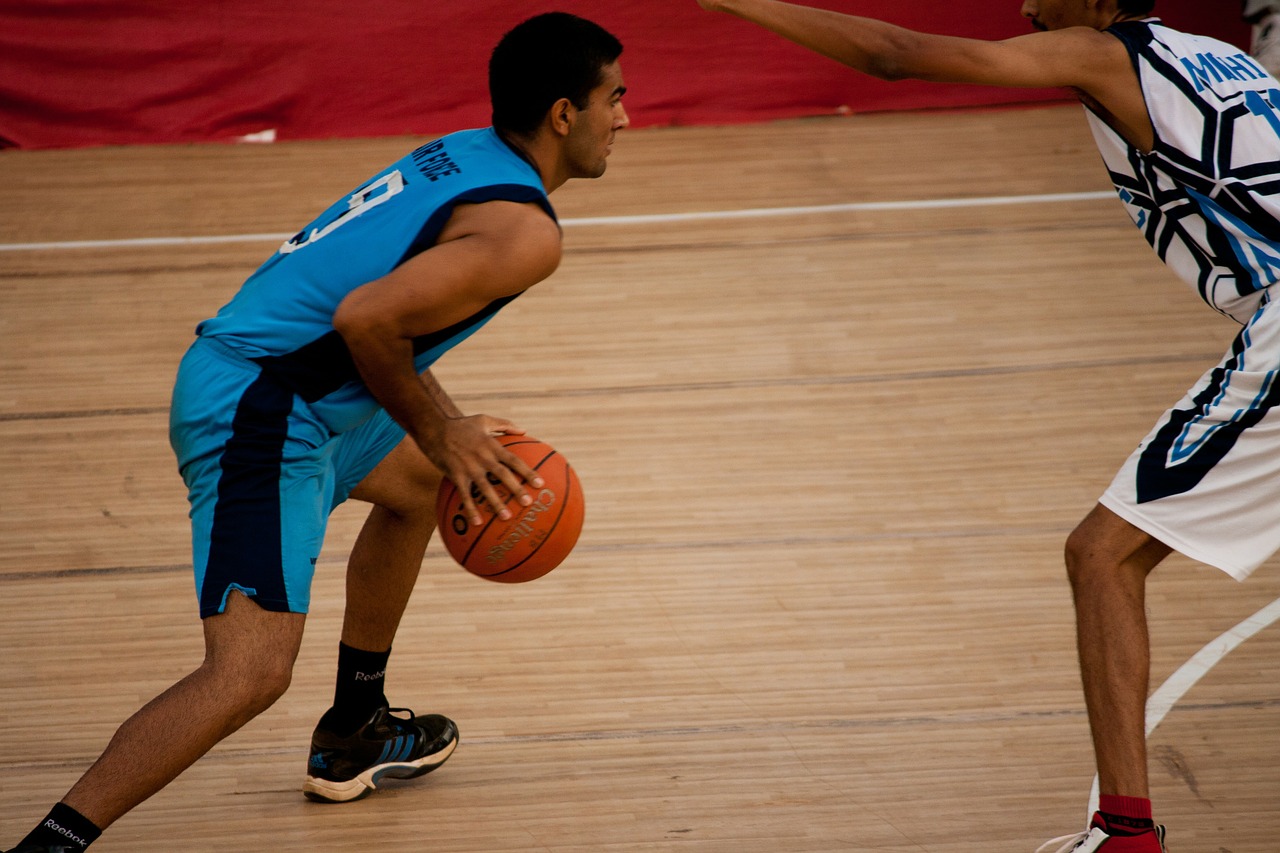A good suspension trainer is a must have for a home gym. A suspension trainer allows for an almost unlimited number of exercises to be done; everything from main exercises to what I call finishing moves (i.e. great exercises to end a workout with). Suspension trainer exercises have some advantages and challenges. In terms of advantages they allow for variety so almost everything can get worked. There is a lot of core and stabilizing muscle involvement which you sometimes don’t get with free weights. They also have a huge balance component. The biggest challenge (besides the learning curve) is that since it uses bodyweight the exercises can be difficult to overload – after all, what happens when you can do 12-15 of the exercise? This is why I recommend using these as finishing exercises (i.e. once you are tired).
Suspension trainers work best when they are suspended to something overhead. I prefer doing this with a pull up bar, preferably attached to your squat rack. This will keep you from having to worry about holes and anchors in your ceiling. They also require enough space to perform the exercises.
The TRX® is the granddaddy of suspension trainers (see below for an image). I’ve been using this one for years and find it to be a great addition to my home gym.

The suspension trainer can be used for a lot of exercises:
- Upper back: rows, pull-ups
- Chest: presses, push-ups (see below), dips, flies
- Shoulders: rear delts
- Arms: curls, triceps extensions
- Lower body: squats, one-legged squats, lunges, hip lifts, leg curls
- Core: planks, knees to chest, v-ups
~ This site is supported by its audience. When you purchase on Amazon through links on my site, I may earn an affiliate commission. ~



